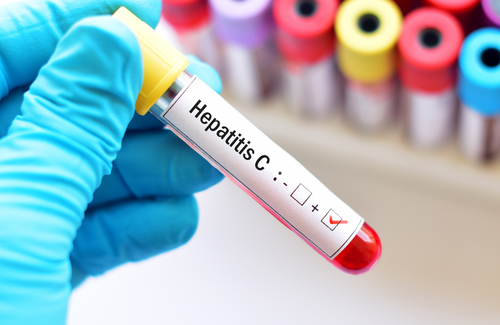
Testing for hepatitis C among gay and bisexual men with HIV who are at higher risk of acquiring hepatitis C is falling short of recommendations, a study of a large US cohort of people in regular HIV care shows.
The findings are published in the journal Open Forum Infectious Diseases.
Hepatitis C can be cured by a short course of direct-acting antiviral treatment and the World Health Organization has set targets for testing and treatment coverage by 2030 with the aim of eliminating hepatitis C. Left undiagnosed and untreated, hepatitis C may eventually lead to liver damage or liver cancer.
Hepatitis C elimination partially depends on targeting groups of people with high hepatitis C prevalence, such as people who inject drugs and people with HIV, through intensified screening, linkage to care and treatment. This strategy, known as micro-elimination, has demonstrated strong progress towards elimination targets in some countries, notably Switzerland and Spain.
In the United States, up to 30% of 1.1 million people living with HIV are estimated to have co-infection with hepatitis C. It’s unclear what proportion remain undiagnosed. The US Centers for Disease Control and Prevention (CDC), the HIV Medicine Association and the National Institutes of Health recommended routine testing for hepatitis C in people with HIV in 2009. In 2015 CDC recommended that people with HIV should be screened annually if they were at high risk of acquiring hepatitis C.
There is little information about how well this guidance is being implemented in the United States, especially among people at higher risk of hepatitis C acquisition.
Investigators from the HIV Outpatients Study set out to analyse hepatitis C testing in their own cohort among gay and bisexual men with HIV. Ongoing sexual transmission of hepatitis C is especially concentrated among gay and bisexual men who are HIV positive, due in part to condomless sex between men with HIV.
The HIV Outpatients Study follows people with HIV receiving HIV care at nine clinics in six large US cities. This analysis looked at all gay and bisexual men receiving at least two years of care at a participating clinic between 2011 and 2019. It excluded people who inject drugs or people who had already tested positive for hepatitis C antibodies.
"Neither substance use nor condomless anal sex was associated with being tested for hepatitis C."
The study population consisted of 1829 men with HIV, predominantly non-Hispanic White (64%) or Black (22%). Most participants (69%) were aged 40 or over and had private health insurance (64%). Just over half of the study population had been diagnosed with HIV before 2000 (51%) and 83% were already taking antiretroviral treatment at the beginning of the study period.
Between 2011 and 2019, 66% of participants were tested for hepatitis C antibodies at least once and each year 30% of the study cohort was tested. Multivariable analysis showed that men were significantly more likely to be tested for hepatitis C if one of the following applied:
- HIV diagnosis after 2000, especially from 2011 onwards (odds ratio 1.42, 95% CI 1.09-1.84 for 2011-2019 versus prior to 2000)
- Public health insurance (OR 1.22, 95% CI 1.07-1.39 versus private insurance)
- CD4 cell count below 350 (OR 1.28, 95% CI 1.08-1.52)
- A history of chlamydia, gonorrhoea (OR 1.68, 95% CI 1.42-2.00) or syphilis (OR 1.54, 95% CI 1.29-1.84)
- Hepatitis B virus (OR 6.02, 95% CI 2.59-13.98)
- Liver enzyme elevations (OR 1.30, 95% CI 1.13-1.49).
After controlling for these factors, the investigators found no racial or ethnic difference in testing rates.
Men at higher risk of hepatitis C acquisition were identified through behavioural interviews. Two-thirds of the study cohort completed at least one computerised behavioural interview during the study period. Forty per cent reported substance use and 43% reported condomless anal sex. In each case, around one-third of those reporting the behaviour had been tested for hepatitis C antibodies in the 12 months preceding their behavioural interview. Multivariable analysis showed that neither substance use nor condomless anal sex was associated with being tested for hepatitis C, indicating that the men at greatest risk of hepatitis C acquisition were no more likely to be tested than people at low risk or the sexually inactive.
The study investigators say that four factors probably contribute to the low annual testing rate. They need to be addressed to improve implementation of hepatitis C testing recommendations among gay and bisexual men:
- Lack of awareness among healthcare providers and gay and bisexual men of the risk of sexual transmission of hepatitis C.
- Lack of awareness or non-compliance with hepatitis C testing guidance.
- Time constraints on patient visits means that testing is not prioritised.
- Lack of awareness of the availability of hepatitis C testing among people with HIV and lack of awareness that it is covered by most public or private health insurance plans.
The investigators recommend that a comprehensive history should be taken to identify people at high risk of hepatitis C acquisition at each clinic visit. Anyone reporting risk factors at a clinic visit should be offered a test for hepatitis C on that visit.
Li J et al. Hepatitis C virus testing among men with human immunodeficiency virus who have sex with men: temporal trends and racial/ethnic disparities. Open Forum Infectious Diseases, 8: ofaa645, 2021 (open access).
https://doi.org/10.1093/ofid/ofaa645

